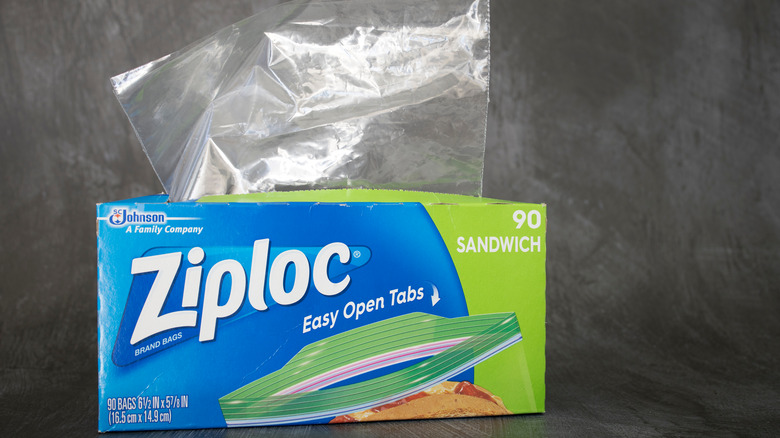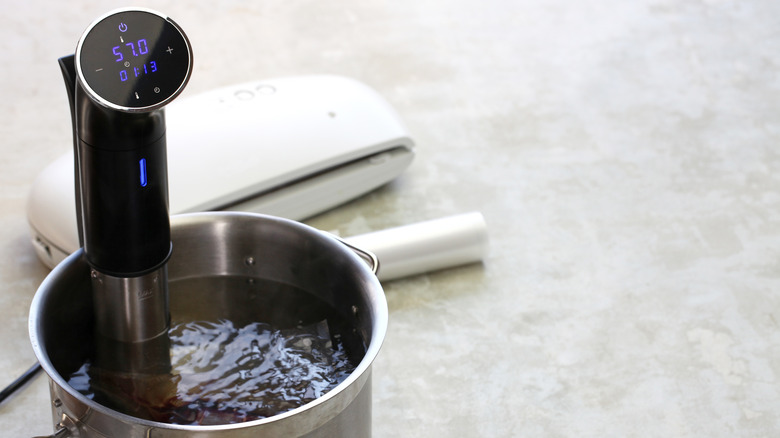Can You Use Ziploc Bags To Sous Vide?
Ralph Waldo Emmerson warned that you should beware of any enterprise that requires new clothes (via BrainyQuote). Well, you may not need new clothes to sous vide (though an apron couldn't hurt), but you're definitely going to need some new equipment. Sous vide is French for "under vacuum," and it's a method of cooking that was once reserved for professional kitchens and fancy food fanatics, according to Bon Appétit. The reason for this wasn't based on culinary chops, so to speak – sous vide cooking is actually quite simple. It's just that sous vide is the ideal method for cooking a lot of food (say, a restaurant full of steaks) efficiently and consistently, so it was practiced mostly in professional kitchens, not amateur ones. Well, that, and sous vide machines themselves used to cost a ton.
These days, companies like Chef Steps and Anova are selling sous vide cookers at a far more reasonable price point (around $100) and marketing them to the home chef. The cooking method involves getting water to a consistently hot (but not boiling) temperature, dropping in a vacuum-sealed food, and letting the water cook the submerged food slowly and evenly over a period of time. The sous vide machine acts like jacuzzi jets, taking water from the pot, heating it with a coil, and spitting it back out into the pot, creating a circulating, consistently regulated water temperature based on your specifications. Once you've got your sous vide-er, you're practically home free – that is, as long as you can guarantee that whatever you're using to vacuum seal your food truly is airtight.
When it comes to sous vide, air is the real enemy
If purchasing the sous vide circulator left you with nothing to spend on an actual vacuum-sealing machine, you are probably eyeing that drawerful of Ziploc bags, wondering how different they could possibly be. It turns out, cooking something sous vide is a little like presenting a big argument to your partner: you want to make sure it's airtight. If you are going to go after your spouse for never putting the toilet seat down, you better check every bathroom in the house first. Once you've documented, cataloged, and photographed every open toilet seat on your property, you're ready to sous vide. Er, yell at your partner. Sous vide is a little less effort and probably going to result in a tastier outcome.
According to Cook's Illustrated, most high-end, name-brand plastic bags, like Ziploc and Glad, are safe to sous vide in. Made with non-toxic plastics, Ziploc bags should not leach chemicals when submerged in sub-boiling water. In fact, Cook's Illustrated points out that Ziploc bags are made using polyethylene and no additives, so there is no risk of toxicity even if you cut up a bag and ate it for dinner instead of your sous vide steak ... Though this is, of course, a terrible idea. If you're still nervous, SC Johnson, the maker of Ziploc, publishes the ingredients used in its products – a weird flex if you're using anything toxic. If you're still worried, the magazine recommends cooking with Mason jars or food-safe silicone bags. But whatever you use, make sure that air is outta there.

